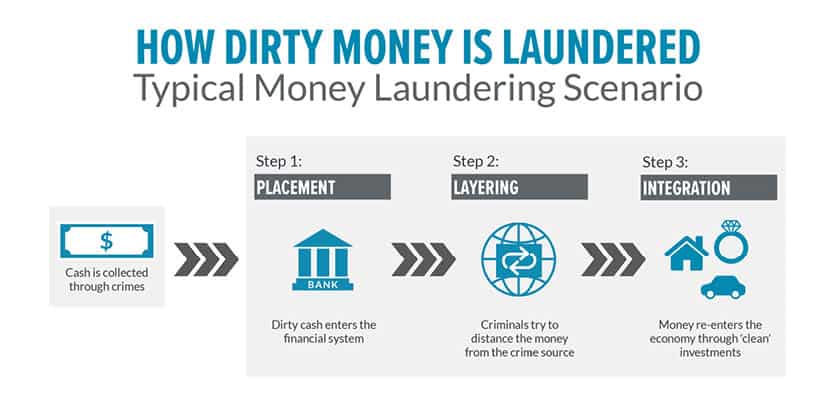Money Laundering
Defination:"Money laundering is turning “dirty” money “clean” by making it look like money from crimes actually came from legitimate sources."
Money laundering allows criminals to:
- hide and accumulate wealth
- avoid prosecution
- avoid taxes
- increase profits through reinvestment
- fund further criminal activity
Criminals who engage in money laundering derive their proceeds through:
- Complex financial crimes
- Health care fraud
- Human trafficking
- International and domestic public corruption
- Narcotics trafficking
- Terrorism
Criminals use a number of tools to launder money, including:
- Financial institutions
- International trade
- Precious metals
- Real estate
- Third party service providers
- Virtual currency
There are three steps in the money laundering process—placement, layering, and integration:- Placement is the criminal entering money into the financial system.
- Layering is the most complex and often involves moving money internationally. Layering separates the criminal’s money from the original source and creates a complex audit trail through a series of financial transactions.
- Integration occurs when the criminal’s proceeds are returned to them from what appear to be legitimate sources.
- Placement is the criminal entering money into the financial system.
- Layering is the most complex and often involves moving money internationally. Layering separates the criminal’s money from the original source and creates a complex audit trail through a series of financial transactions.
- Integration occurs when the criminal’s proceeds are returned to them from what appear to be legitimate sources.


